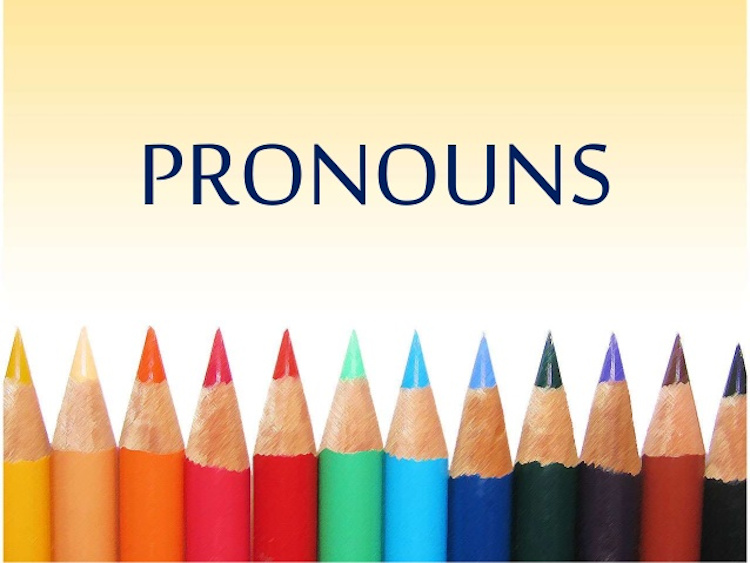Education
Pronouns And Their Intricacies – Ganiu Bamgbose, PhD

Pronouns are words used instead of nouns. When we use ‘he’ in place of ‘Kunle’, for example, the former is said to be a pronoun. Pronouns are function words, and they belong to the closed system items of word classes.
Closed system items are word classes that do not admit new words into their folds; they are pronouns, determiners, conjunctions and prepositions. As simple as these word classes appear, they constitute difficulties to many a second-language user because they are like the cords connecting the lexical items which are nouns, verbs, adjectives and adverbs. This treatise will identify certain pronoun types and their areas of difficulty.
To begin with demonstrative pronouns/determiners, these pronouns or determiners—this, these, that and those—are used to make references. They can be classified using two parameters, namely number and reference. Using the number parameter, ‘this’ and ‘that’ are singular, while ‘these’ and ‘those’ are plural:
Have you seen that people before (non-standard)?
Have you seen those people before (standard)?
I know some of this were not done deliberately (non-standard).
I know some of these were not done deliberately (standard).
Users of English must be careful to deploy these words appropriately. Using the reference parameter, ‘this’ and ‘these’ are for close reference, whereas ‘that’ and ‘those’ are for far reference:
I saw this boy standing across the road yesterday (non-standard).
I saw that boy standing across the road yesterday (standard).
- Expressing Etiquette In English — Dr Ganiu Abisoye Bamgbose
- She Likes Rice, Doesn’t She?: Tag Questions In English —Dr Ganiu Bamgbose
Don’t Take It Personal: Word Classes And Errors Of Usage —DR Ganiu Bamgbose
Relative pronouns—who, whom, whose, which and that—are also problematic to users. Note that whose and that can be used for both humans and things, as seen below:
I saw the girl whose father lives here (standard).
This is the car whose battery was stolen (standard).
This is the person that we spoke about (standard).
That is the article that we bought (standard).
‘Which’ should only be used for things, as in:
That is the car which he bought for her (standard).
However, which can be used for human beings when asking questions:
Which of them will you marry?
Moving on, who and whom are used for persons, but while ‘who’ is deployed in the subject position (the doer of an action), ‘whom’ is used in the object position (the receiver of action):
We saw the man who slapped the lady (standard).
We did not see the lady who he slapped (non-standard).
We did not see the lady whom he slapped (standard).
Pronouns And Their Intricacies – Ganiu Bamgbose, PhD
Also, it should be noted that the noun after the relative pronoun should control the verb that comes first in a sentence when there are two verbs in a sentence. This confusing aspect of subject-verb agreement is exemplified below:
The woman whose parents live/lives here has/have travelled.
This sentence can be detached thus:
The woman has travelled + her parents live here = The woman whose parents LIVE here HAS travelled.
Some of the people who works/work here travels/travel regularly.
The detachment is portrayed below:
People work here + some travel regularly = Some of the people who WORK here TRAVEL regularly.
Also, the relative pronouns could serve as distractions in choosing appropriate verbs. The general reader should note that the antecedent (that is, the noun or pronoun which precedes the relative pronoun) controls a verb and not the relative pronoun. Such confusions are shown in the following example sentences:
It is only I who is available for the job (non-standard).
It is only I who am available for the job (standard).
It is you who is to be blamed for all these errors (non-standard).
It is you who are to be blamed for all these errors (standard).
Note that it is erroneous to say ‘I is’ or ‘you is’. The errors in the non-standard forms above are, therefore, born out of the distractions of ‘who’, which the user should be mindful of.
Last but not least, the readership should refrain from confusing the usage of reflexive pronouns with the purpose that reciprocal pronouns serve. While reflexive pronouns—myself, yourself, himself, herself, ourselves, yourselves and themselves—indicate that the verbs affect the subjects of sentences, reciprocal pronouns—each other and one another—depict the exchange of actions between two or more people. A juxtaposition of the usages of these pronouns will buttress these definitions:
Mary and Joseph love themselves. (That is, Mary loves herself and Joseph loves himself.)
Mary and Joseph love each other (In other words, Mary loves Joseph, and Joseph loves Mary in return.)
What is more:
Bimbo and Segun hugged themselves (non-standard).
Bimbo and Segun hugged one another (standard).
It is equally pertinent to disclose that, in contemporary standard English, each other and one another can be used interchangeably thus:
The three children waved at each other (standard).
The three children waved at one another (standard).
The various aspects of pronouns discussed above have clearly shown that the word class could be problematic to users if not well mastered. The treatise is, therefore, a practical guide if well perused.
© 2021 Ganiu Abisoye Bamgbose (Dr GAB)
Department of English,
Lagos State University















